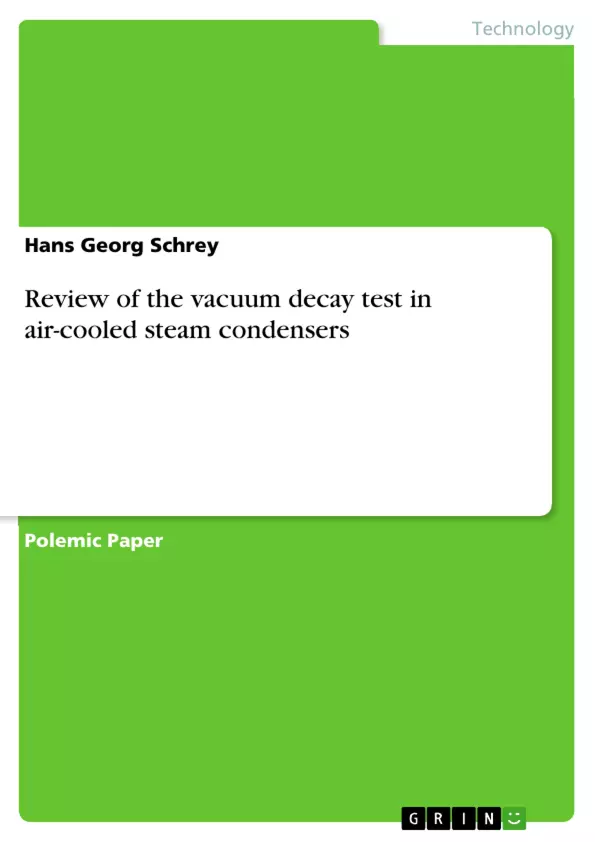Condensing the capacity of air-cooled condensers is critical for proper functionality of steam cycles in power plants. Condensers operate in the low vacuum regime to promote the efficiency of power generation. Leakages enable ingress of ambient air into the steam cycle and thus impede condensation and power generation capacity. Therefore, vacuum tightness is essential for effective plant operation and must be verified by means of an acceptance test.
The latest revision of the VGB acceptance test code for the air-cooled condenser (VGB-S-131) proposes a simple procedure to verify ample vacuum tightness and evacuation capacity. However, the following report will demonstrate that the informational value of test results in connection with the proposed procedure are to some extent questionable. They cannot stand for themselves but need to be accompanied by further information gathered from other tests, as for example thermal performance tests. This puts the usefulness of the test itself into question.
Inhaltsverzeichnis (Table of Contents)
- Introduction.
- VGB Air Leakage and Evacuation Test.
- Evacuation Flow............
- Cold Volume Evacuation
- Summary
- Glossary..
- Bibliography.
Zielsetzung und Themenschwerpunkte (Objectives and Key Themes)
This report aims to analyze the effectiveness of the vacuum decay test as prescribed by the VGB-S131 standard for air-cooled condensers (ACCs). The report investigates the limitations of this test procedure and explores its ability to accurately verify the vacuum tightness and evacuation capacity of ACC systems.
- Vacuum tightness and evacuation capacity of air-cooled condensers
- VGB-S131 standard for ACC acceptance testing
- Limitations of the vacuum decay test procedure
- Impact of air leakage on condenser performance
- Importance of thermal design and evacuation system functionality
Zusammenfassung der Kapitel (Chapter Summaries)
- Introduction: This chapter introduces the significance of air-cooled condensers in modern power plants, particularly in combined-cycle power plants (CCPPs). It highlights the importance of vacuum tightness and the challenges associated with inert gas removal from the vacuum system. The chapter discusses various methods for testing vacuum tightness and introduces the VGB test code, which proposes a simplified procedure.
- VGB Air Leakage and Evacuation Test: This chapter delves into the details of the VGB test procedure, outlining the two-step process involving vacuum loss and recovery. The chapter discusses the assumptions underlying the test and emphasizes the need for stationary operation conditions.
Schlüsselwörter (Keywords)
The key terms and focus topics of this paper encompass air-cooled condensers (ACCs), vacuum decay, air leakage, VGB-S131 standard, evacuation capacity, thermal design, and the impact of air ingress on condenser performance. It also includes key terms like inert gas removal, subcooling, and stationary operation conditions.
- Quote paper
- Hans Georg Schrey (Author), 2018, Review of the vacuum decay test in air-cooled steam condensers, Munich, GRIN Verlag, https://www.grin.com/document/455056



